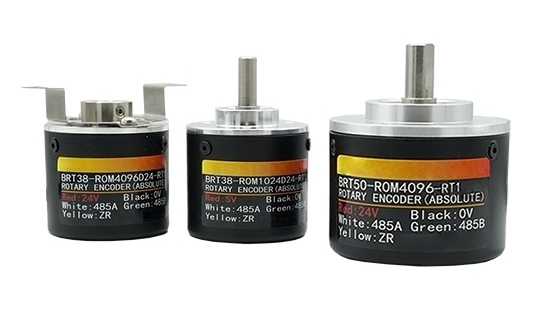What’s the Difference between Single and Multi-Turn Absolute Encoders?
Absolute encoder refers to the absolute code within the precise measurement device (sensor), within the range of precise measurement, the specific position of all mechanical equipment has a unique corresponding relationship with the origin of the specific position of the machine in advance, any time accurate measurements do not rely on the history of previous measurements. Even without moving, the unique absolute code can be output directly.
The fundamentals of absolute encoders are firstly that complete positioning information can be obtained without relying on movement, and each specific position is unique; secondly, it is irrelevant to the previous reading (including various memory methods). The high-resolution absolute encoder can accurately measure and output a unique signal value without moving the position and without knowing the specific position of the previous reading. So what is the difference between single-turn and multi-turn absolute encoders?

What is a single-turn absolute encoder?
The single-turn absolute rotary encoder is absolute position detection within one rotation to which the rotation angle is output in parallel as an absolute numerical value by the code of 2n, the position of the accumulation is not understood when rotating by two rotations or more. A single-turn encoder is analogous to a watch with only a minute hand (left). After 60 minutes, the watch resets and does not record the total number of turns, or in this case, hours.
What is a multi-turn absolute encoder?
Multi-turn absolute encoders can sense not only the angular position within one turn but also how many turns the encoder has made since the day it was used. The multi-turn value encoder is like a complete clock, with both seconds, clock and minutes, not only can directly display the current position but also can see the accumulated amount.
Differences between single-turn and multi-turn absolute encoder
Single-turn absolute encoder
The basic principle of the single-turn absolute encoder (each specific position on the code disc has a unique code) each specific position of the absolute incremental encoder matches a certain digital code, so its indication value is only the same as The start and end of the precise measurement are related to the specific position, but not related to the middle process of the measurement.
Single-turn absolute encoder and multi-turn absolute encoder The so-called single-turn and multi-turn encoders refer to absolute encoders. Absolute encoders can also be perceived at any time, especially at the moment of power-on. The specific position of the absolute angle at the current stage. The single-turn one can only sense the specific position of the absolute angle within one circle; the multi-turn one can not only sense the specific absolute angle position within one circle but also can perceive how many angles the encoder has turned since the day it was used. The absolute encoder determines the uniqueness of each position by the specific position of the mechanical device (of course, this angle is the cumulative sum of the forward and reverse rotation of the encoder).
Multi-turn absolute encoder
The absolute value multi-turn encoder is within its measurement range, not only has "absolute value encoding" within 360 degrees of a single turn but also has a unique absolute encoding of multi-turn values that do not depend on counting after exceeding 360 degrees. It is usually similar to the basic principle of the minute and hour hands of a clock.
The multi-turn absolute value encoder should indicate its resolution and accurately measure the number of turns by the number of single-turn digits X multi-turn digits. The common number of multi-turns is 4096 turns, and a small amount can reach 16384 turns and 65536 turns (16 bits). ATO's multi-turn absolute encoder can reach a maximum of 19872 turns and a maximum single-turn resolution of 4096.
Absolute encoder, because each specific position is absolutely unique, anti-interference, no power-off memory. There are many engraved lines on the optical code disk of the absolute encoder, and each engraved line is arranged into 2 lines, 4 lines, 8 lines, 16 lines, etc. in turn. In this way, at each specific position of the encoder, according to reading the on and off of each engraved line, a set of unique binary codes (Gray code) from the zero power of 2 to the n-1 power of 2 can be obtained ).

